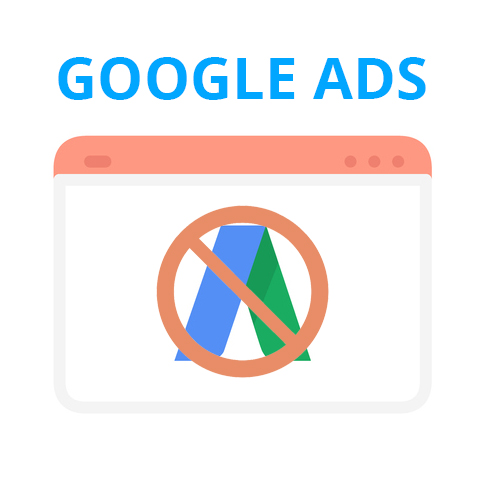Digital Marketing Terms You Need to Know

Part of achieving law firm success is growing your business. To do this, you need to be selling your services online. Digital marketing terms, similar to legal terminology, can be intimidating for the uninitiated. That’s why we’ve created a list of some of the most commonly used digital marketing terms and their definitions that you can use as a quick reference tool.
301 Redirect: The method of redirecting website visitors from one page to another permanently, often used to keep pre-existing traffic and links.
A/B Testing: A common testing method where two versions of a webpage are posted and measured against each other to determine effectiveness.
Above the Fold: The top part of a webpage that appears without having to scroll down. The most impactful items of a page should be placed here so that they are the first items a visitor sees.
Algorithm: Search engines and social media platforms employ a complex set of rules, called algorithms, to determine how content is displayed.
Anchor Text: The clickable text that contains a link, which takes a visitor from one webpage to another.
Backlink: A hyperlink directed from one website to another. Backlinks can help improve a site’s authority, and potentially their search engine performance.
Blog: A part of a website that publishes regular content with the intention of attracting and engaging visitors.
Bounce Rate: The percentage of visitors who leave a website after only viewing the page they entered the site from.
Buyer’s Journey: The process a lead goes through before making a purchase. A basic buyer’s journey consists of the Awareness, Consideration, and Decision stages.
Call to Action (CTA): An appeal for online users to take a specific action, such as to fill out a form, click a link, make a phone call, or purchase a product.
Channel: An outlet or avenue a digital advertiser uses to reach their audience, such as Google, social media, or email.
Click Through Rate (CTR): The percentage of users who see an ad that clicks on it, measured by dividing the number of ad clicks by the number of ad impressions.
Conversion Rate Optimization (CRO): A marketing strategy meant to increase the percentage of visitors who convert to paying customers.
Content Marketing: The strategic marketing approach focused on the planning, creation and distribution of content, such as blog posts, videos, social media posts, podcasts, and more.
Display Advertising: A type of online advertising that uses video or images rather than text to communicate ads in Google or on social media platforms.
Domain Authority: A search engine ranking score developed by Moz that uses various domain metrics to predict how well a website may rank in search engines such as Google.
Email Marketing: The process of sending communications through email to customers or potential customers. Communication can include promotions, announcements, or information in order to gain or retain business.
Engagement Rate: The percentage of viewers or followers that engages or interacts with a post through comments, likes, shares, and more.
Featured Snippets: A special box that appears at the top of Google’s search result that contains information that may match a user’s search query, pulled from a relevant website. These boxes are much larger than normal results and can contain bullet points and tables.
Google Ads: The name of Google’s paid advertising service, where businesses can bid on keywords to display ads in search result pages and on Google’s partner websites.
Google Analytics: Google’s web analytics platform that allows website owners to measure website traffic, track conversions, and gauge other useful metrics.
H Tags: Header tags in HTML, Header tags go from <h1> down to <h6> with the <h1> tag being the most important and <h6> the least. Header tags are a way of breaking up content so a user better understands what each section of a page is about. Google also scans H tags to discern what a particular webpage is about.
Impressions: The number of times a search engine or other platform displays your ad to a potential customer.
Inbound Llink: A link that directs users to your site from a third-party site, which is something that can boost your domain authority and SEO.
Index: An “index” is a repository of websites that a search engine crawler – such as Googlebot – finds by crawling links on the web. Search Engines will then pull results from their index to serve when someone performs a search.
Keywords: For the sake of search engine optimization, keywords and keyword phrases describe what is on a web page so that search engines can find the most relevant content.
KPI: Key Performance Indicator is a metric that helps digital marketers evaluate their marketing efforts.
Landing Page: A single web page with a focused pitch that is designed to lead a visitor toward a specific action.
Lead: A potential client in your sales funnel who has shown interest in your firm by placing a call, filling out a contact form, or engaging online.
Metadata: Refers to the HTML descriptions and tags that communicate relevant page information to the search engines.
Mobile Search: An online search performed on a mobile device, such as a smartphone, which now dominates all online consumer search activity.
Organic Traffic: Describes users who arrive at a website by clicking on non-paid search engine results.
Outbound Link: A link that goes from your website to another with the potential to take a visitor away from your site. Also known as an external link.
Page Speed: The time it takes for a web page to load on a mobile device or browser. From a visitor experience and ranking perspective, page speed can impact digital marketing results.
Page Views: The number of times users viewed a web page, which can be tracked in Google Analytics.
Paid Advertising: A digital marketing strategy referring to paid ad placements instead of organic results. It includes pay-per-click (PPC) advertising and branded content.
Quality Score: Google AdWords gives advertisers a rating specific to the relevance and quality of PPC keywords in a given campaign. A higher quality score can mean a better ad ranking and lower ad costs.
Rankings: A general term used to refer to a website’s position in search engine result pages.
Remarketing: Also called “retargeting,” this marketing strategy involves showing paid ads to potential clients who have already visited and left your website.
SEO: Search Engine Optimization is the process of optimizing your website performance and content in the effort to grow the quantity and quality of organic traffic to your site from search engines such as Google.
SERP: Search engine result pages in a search engine such as Google or Bing. These are the pages of results users see after typing in their search query.
Social Media Marketing: Using social media platforms like Facebook, Twitter, and Instagram to build brand awareness and drive traffic to a business website.
Traffic: The total amount of visitors who go to a website. This figure can be separated into total clicks and unique visitors.
Unique Visitors: This figure uses IP address information to count the number of distinct individuals that view a page within a specified period of time.
XML Sitemap: A document on your website that helps search engines identify which pages of the site to crawl and index.
While this isn’t an exhaustive list, it’s fairly comprehensive and should give you the vocabulary and tools you need to better understand the online marketing landscape.









